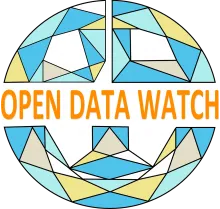The recently released 2015 Open Data Inventory (ODIN) assessed the openness and coverage of official statistics for 125 countries in 20 data categories. Breaking down the country scores by category, we found only 7 percent of the categories received full points for data coverage. And no data category in any country received full points for data openness. Surprising, because improving openness and accessibility is not always hard to do. This blog post makes three recommendations to National Statistical Offices (NSOs) to improve their online data offerings.

- Adopt open terms of use: By adopting open terms of use (such as a Creative Commons CC-BY license), anyone can use important information about the social, economic, and environmental conditions to innovate. A tiny fraction of countries licenses their official statistics for unrestricted use and re-use. Eighty-six NSO websites did not provide any information about terms of use. Only three of the 125 countries had terms of use that allowed for unrestricted use and re-use of data. This means that many who could use data to inform others or build businesses can’t, because they are uncertain of the legal status of the data.
- Make data downloadable in machine-readable and non-proprietary formats: Too many data are only available in proprietary and non-machine readable formats. At the country level, 61 percent of the categories offered data only in formats that aren’t machine readable (such as PDFs). Forty percent of the data categories are only available in proprietary formats. By limiting access to these restricted formats, data are much less likely to be used.
- Make data websites easy to navigate: NSOs need to devote more resources to ensuring that their data are open and available by making their websites reliable and easy to use. While the ease of using NSO websites was not included in our assessments, we noticed many problems that reduce the usefulness and openness official statistics. One country’s website took up to five hours to download a 20-page PDF report. Some countries offered wildly different content depending on which official language was being viewed. A few had websites that had not been updated since 2006. Several countries did not have websites for their national statistics offices at all.
To achieve the Sustainable Development Goals and respond to the demands of the data revolution, countries will need to do more of the hard work of developing capacity and producing better, higher quality data. This will take time and resources. But, as we learned through ODIN, there are many inexpensive, relatively painless things NSOs can do to make their data much more open.
Please check out our website (odin.opendatawatch.com) and read our 2015 ODIN Annual Report for more information about our findings.
Source: HTTP://OPENDATAWATCH.COM/BLOG/LESSONS-FROM-THE-2015-OPE
